Newer technology adds versatility to
external drive options
Versatility is a necessity in today’s
storage market, thanks to the variety of storage media that you can use, such
as standard hard drives, SSDs, memory cards, and optical discs. Throw in the
variety of cables and connection options-USB, FireWire, and so forth- (it’s
similar in size and appearance to the Mac mini desktop computer), and the
latest version has the ability to support a 4TB hard drive. You have the option
of purchasing miniStack models with or without a hard drive installed; if you
choose the model without a hard drive, and power external devices like iPhones,
scanners, or keyboards,” Dahlke says. “One port offers 2.1 A of power for charging
an iPad or other devices that require more power than provided by standard USB
connectors.”
Dahlke says Newer Technology put the newer
technology and you truly need as much versatility as you can find in an
external drive.
One of the more versatile options now in
the market is the miniStack from Newer Technology . . . that is, until the
miniStack MAX hits the market toward the end of August. The miniStack works
with PCs and Macs and provides up to 4GB of external storage that you can
access via USB 2.0/3.0, FireWire 400/800, or eSATA. The miniStack MAX does all
of this and adds a DVD drive and a memory card reader. The SD/SDXC card reader
on the MAX connects to the hard drive through a USB 3.0 connection, allowing it
to transfer data as quickly as possible. And, with some newer PC form factors
no longer containing an optical drive, the miniStack MAX is a convenient bridge
to playing DVDs and installing software from installation discs.
MiniStack Design Options
The miniStack design has been around for a
few years with various upgrades you can of course install your own drive, so
long as it meets the specifications of the miniStack models.
“No minimum size of hard drive is required
in either model,” says Grant Dahlke, brand manager for Newer Technology.
The miniStack and miniStack MAX models are
quad-interface devices, as they allow a connection with the computer through a
FireWire 400 interface, a FireWire 800 interface, a USB interface (2.0 or 3.0),
or through an eSATA interface.
“We decided to create the miniStack and
miniStack MAX based on the past successes of the miniStack line and customer
feedback asking for both features and connectivity flexibility,” Dahlke says.
“FireWire 800 is still heavily prevalent on Mac models, including Mac minis
made for the last few years, and it is a substantially faster interface option
vs. USB 2.0.”
With the miniStack MAX, you’re going to be
able to charge devices using the USB ports, as well. “Users can connect
miniStack MAX’s SD/SDXC memory card reader on the front of the model (instead
of at the rear, like the Mac mini’s) for the sake of convenience. “The
integrated USB 3.0 SD card reader on the front of the miniStack MAX makes
transferring photos and video supersimple,” he says.
Dealing With Heat
With all of the connection options and with
the potential for such large hard drive capacities, keeping the unit cool is a
key consideration. Newer Technology has included a MagLev fan with both
miniStack models, which Dahlke says is important because of the fans’ quiet operation.
This is the same style of fan used with Mac mini desktop computers.
“No one likes a noisy device or appliance,”
he says. “As computers have gotten quieter, the need has grown for devices to
emulate that quiet operation, both in the office setting and in home living
spaces. Near-noiseless operation is
Specifications: miniStack vs. miniStack
MAX
Although it may seem natural that users
will quickly gravitate toward miniStack MAX, looking to take advantage of the
extra features that it offers, Dahlke says that each of the two designs will
have its place in the market.
“The reasoning for the two models is some
users are seeking additional storage and back-up capacity, while others want a
full-fledged and centralized connectivity and productivity enhancement device,”
Dahlke says. “Offering multiple interfaces on each model provides the ability
to connect miniStack to just about any Mac or PC made within the last decade,
as well as being able to offer the highest performance for today’s latest and
greatest interfaces.”
The miniStack is going to continue to
provide the same types of functionality that it has been providing in the past,
he says, such as integration with your existing desktop computers to provide a
backup storage option or to add storage space to your current hard drive.
“It’s also a great media sharing device in highperformance entertainment systems and with
Apple TV,” Dahlke says.
With the addition of a memory card reader
and an optical drive into miniStack MAX, Dahlke says this model will appeal to
a different set of customers.
“miniStack MAX is the only four-in-one
storage, data access, and connectivity solution available,” he says. “The Mac
mini and some other computers no longer include an optical drive, and legacy
models may have an inoperable drive, so the miniStack MAX stands ready.”
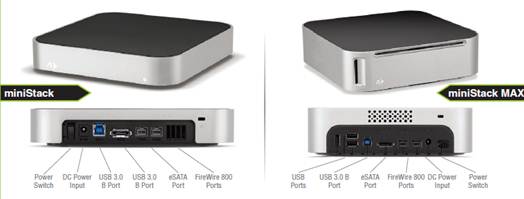
miniStack
and miniStack MAX
Especially important to customers who work
with audio”
Dahlke says that the heat dissipation
design options with the miniStack models provide quite a few benefits, too,
because the miniStack models are designed to be stacked on top of each other.
While this design conserves desk space, it could lead to some problems with the
buildup of heat.
“With its design and aluminum structure,
the heat dissipation characteristics of the miniStacks are exceptional,” Dahlke
says. “As such, the fan is almost overkill.
If the unit wasn’t to be stacked with an
additional drive or computer, there is plenty of temperature buffer to operate
with no fan at all. But we’re committed to ensuring all precautions are made
when it comes to customer data integrity. So we added a MagLev technology fan.”
miniStack Drive Installation
Putting your own hard drive in a miniStack
or miniStack MAX is a pretty easy process, as long as the hard drive meets the
minimum requirements of the miniStack model you’re purchased.
Step 1
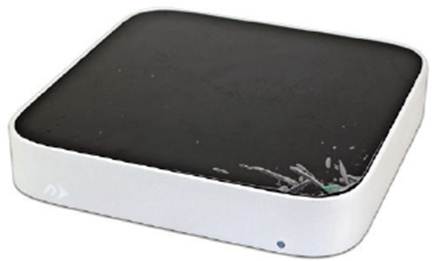
Step
1
Leave the plastic protective sheet on top
of the unit in place and turn over the miniStack, placing it on a soft surface.
Step 2
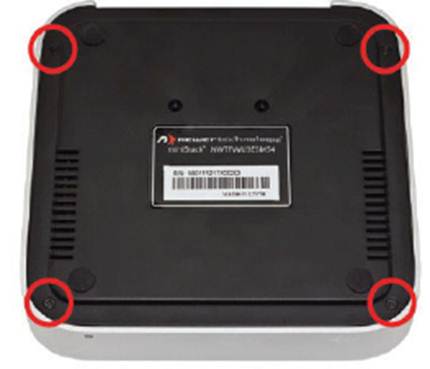
Step
2
Remove the four screws at the corners from
the bottom of the unit. Turn the unit over again and lift the top cover off of
the unit.
Step 3
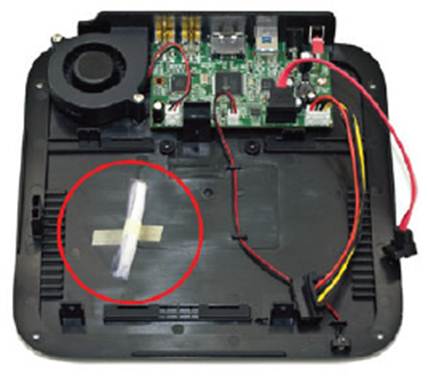
Step
3
Inside the miniStack, you’ll see an area
for the hard drive, as well as assembly screws (circled in red).
Step 4
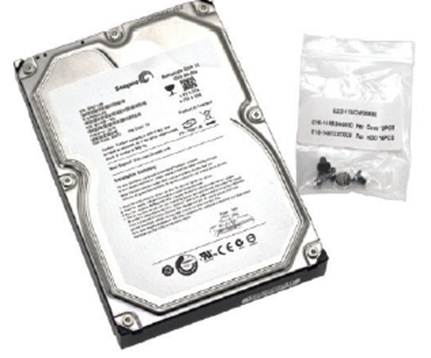
Step
4
Make sure that the assembly screws will fit
your hard drive.
Step 5
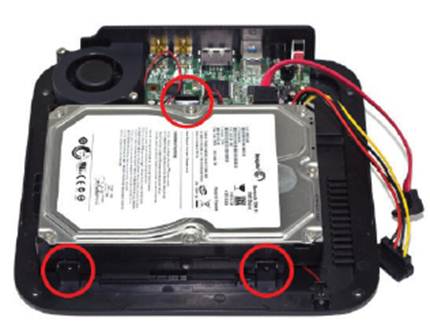
Step
5
Carefully place the hard drive in the
proper location inside the miniStack. The unit has two rubber-coated mounting
tabs (shown in the lower area of this photograph), as well as a mounting tab
(shown in the upper area of this photo). Once the hard drive is secured by
these tabs, use the assembly screws to lock the hard drive in place.
Step 6
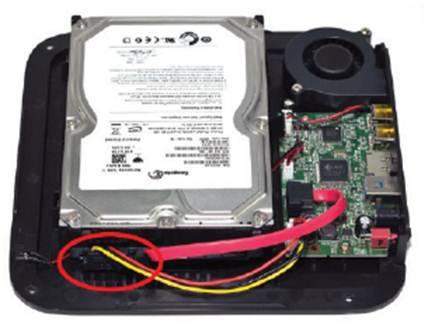
Step
6
Attach the eSATA and power cables from the
circuit board inside the miniStack to the hard drive. Replace the cover and
screw it into place.